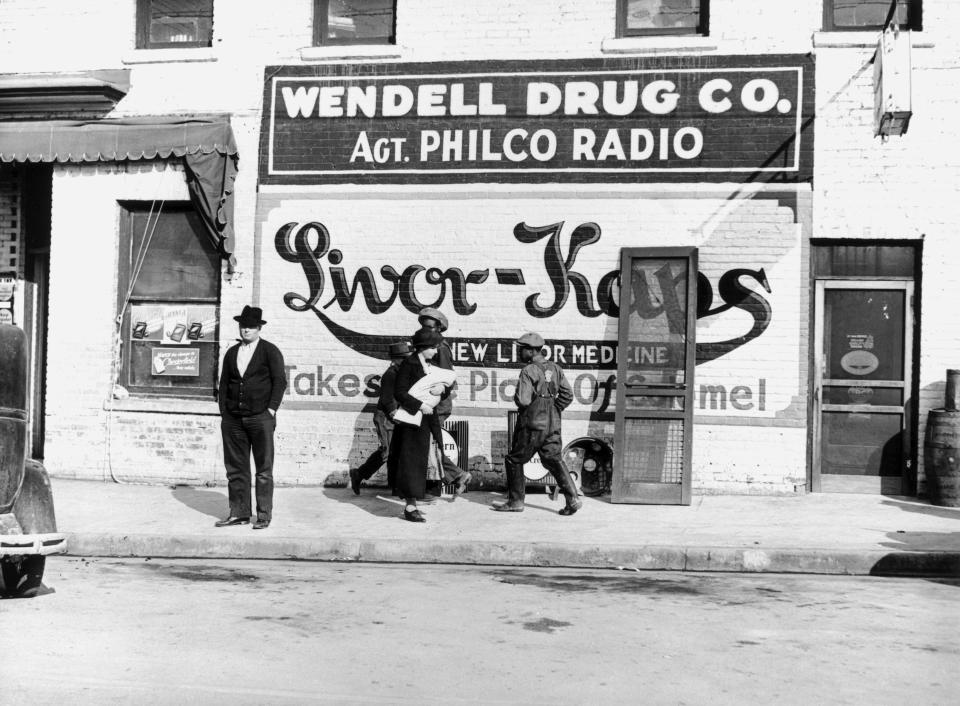'It didn't happen overnight': How the U.S. opioid crisis got so bad
After President Trump signed the nation’s newest opioid law into effect in October 2018, some people raised questions about whether the legislation would be effective and how opioid addiction became such a big problem in the first place.
As far back as October 2017, Trump declared the U.S. opioid crisis to be a public health emergency under federal law: “I am directing all executive agencies to use every appropriate emergency authority to fight the opioid crisis,” the president said.
U.S. opioid crisis ‘didn’t happen overnight’
In 2017, more than 70,000 Americans died from drug overdose deaths, which is a new record according to the Centers for Disease Control and Prevention. By 2013, according to a study in Medical Care journal, the economic burden of the U.S. opioid crisis had already grown to about $78.5 billion.
Brett Giroir, assistant secretary for health and senior adviser for opioid policy at the Department of Health and Human Services, told Yahoo Finance that there’s “no simple answer” for how the epidemic began.
“It’s taken a couple of decades to get us to this point,” he said. “It didn’t happen overnight.”
Giroir explained that many factors play a part in this crisis, including “the overprescription and inappropriate prescription” of opioid painkillers to patients, the “availability and importation” of low-price, high-potency drugs, and “the role of state and society” in allowing the opioid crisis to build.

‘A little over a century ago, the American government…’
David Herzberg, associate professor of history at State University of New York at Buffalo, said that the genesis of this opioid crisis can be traced to the early 20th century.
“A little over a century ago, the American government set up its basic response to drugs of addiction,” he told Yahoo Finance. “The decision was to divide the drug markets into two types: medical and nonmedical.”
These markets, Herzberg said, are used to this day. However, what many don’t realize is that “the people building these categories were the same people who were building Jim Crow racial segregation, campaigning for immigration restriction and implementing eugenic policies.”

Drugs called “medicines” were used by the “kinds of people” that reformers liked — “white people of respectable means,” Herzberg explained. “Drugs that weren’t medicines were ones used by immigrants or African-Americans.”
As a result, “medicines” received less scrutiny and regulation than other drugs because they were thought to be used by “trustworthy” people, he said. Ironically, that evolved into the U.S. opioid crisis when highly addictive “medicines” went mainstream.
‘The pharma industry … put enormous money behind the people pushing for’ opioid prescriptions
Herzberg detailed the U.S. opioid crisis in the context of the increasing power of the pharmaceutical industry, which had “kept coming up to the door, knocking on it and being turned away” until the 1990s.
In December 1995, the FDA approved a new opioid known as Oxycodone. According to the National Institute on Drug Abuse, “pharmaceutical companies reassured the medical community that patients would not become addicted to prescription opioid pain relievers, and health care providers began to prescribe them at greater rates.”

There were three reasons that pharmaceutical companies were allowed to sell the drug with few restraints, according to Herzberg.
The first involved the “Reagan revolution,” which involved deregulation and “unleashing the power of business.” He added: “Conservatives argued that the FDA was killing people by taking too long to bring drugs to the markets.”
The second driving force behind the opioid crisis, according to Herzberg, was the rebound of pharma’s reputation. Drugs such as the antidepressant Prozac helped “pharma get its groove back, and had the science behind it.”
The third reason was a movement to “change the way physicians responded to pain as a medical problem,” which in turn led to prescribing opioids to ease the suffering of cancer patients.

“The pharma industry was aware that the [pain management reform] movement existed and put enormous money behind the people pushing for it,” he explained. “What you had was an FDA that was told to get out of the way of the industry.”
‘Opioids play a unique role in society’
And so the pharmaceutical industry’s opportunism, the backing of politicians and federal regulators and the emerging medical consensus that opioids were highly effective for pain management led to opioids taking hold in American society. Furthermore, given the money pouring in from Big Pharma and a green light from D.C., doctors had a financial incentive to prescribe more opioids.
To make matters worse, the synthetic opioid fentanyl began flooding into the U.S. from China over the last decade.

All of this created the dilemma that is the U.S. opioid crisis: Lawmakers, federal regulators, pharmaceutical companies, and doctors must rein in the overprescription of opioids without hurting Americans who legitimately need the drugs.
“Opioids play a unique role in society,” a 2008 medical study observed. “They are widely feared compounds, which are associated with abuse, addiction and the dire consequences of diversion; they are also essential medications, the most effective drugs for the relief of pain and suffering.”
Adriana Belmonte is an associate editor for Yahoo Finance. Follow her on Twitter @adrianambells.
Michael Kelley contributed to this report.
READ MORE:
Chart: The U.S. opioid crisis is holding back certain states
Kellyanne Conway: The nation’s opioid epidemic is the ‘crisis next door’
Follow Yahoo Finance on Twitter, Facebook, Instagram, Flipboard, LinkedIn, YouTube, and reddit.

